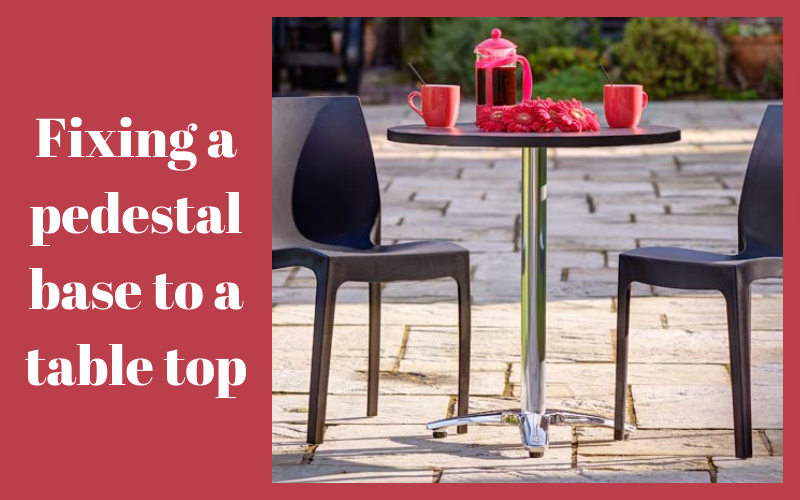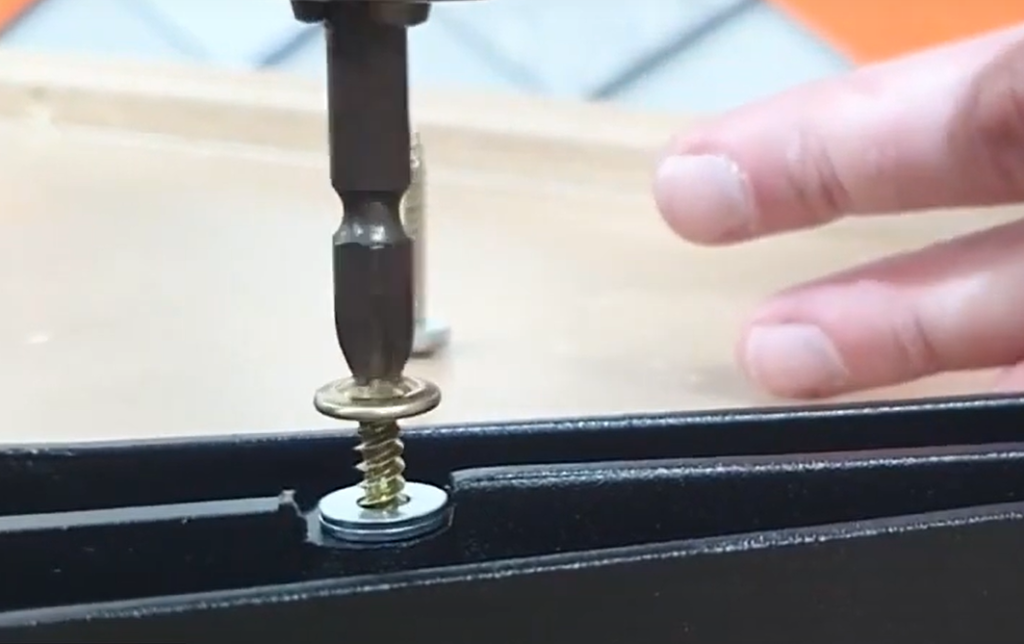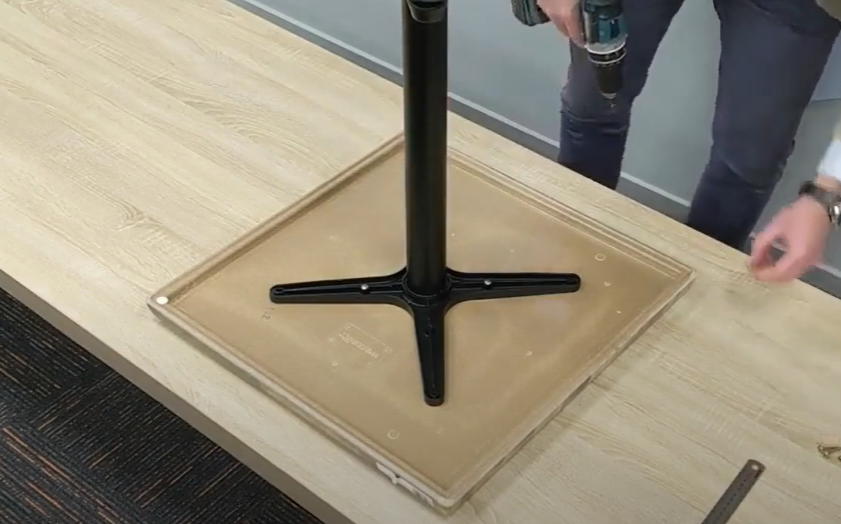
Contract tables are usually purchased in two parts: the table top and the table base are bought separately. This makes it easier for business owners to mix the two parts for the table that suits their needs, and also makes it easier to repair or refresh tables without needing to replace both parts.
It also means that managers or owners of hospitality businesses that are responsible for buying or installing furniture should know the different ways to put together a complete table from the two parts.
Read on to learn everything you need to know about fixing a pedestal table base to a table-tops.
The spider fixing
Almost all pedestal table bases include a ‘spider’ , a crossbar at the top of the column with holes for screws allowing the base to be attached to a table top. Here’s what it looks like:

This is an industry standard design, and you will notice that almost all of the table bases in our store use some form of spider design.
Spiders do, however, come in different shapes, sizes and with different hole arrangements.

The method that you use to attach the spider to the table-top depends on the top. Different materials require different techniques, and there are differences between specific products too.
Some bases need to be assembled before they are attached to the table top. See here for an example: Tabilo Mayan Table Base Construction Tutorial
Here are five methods you might need to use to attach the spider to the table-top.
Screwing directly into the top
Wooden and laminate tops typically do not have holes for screws. Instead, the correct attachment method is to use a screwdriver (ideally electric) in order to screw directly into the wood or laminate material.
Before you start:
- Measure the distance from each side of the spider to the edge of the table top so that the spider is exactly in the middle.
- Check your screws are shorter than the width of the table or you will quickly turn your table into an unsafe surface.


Wooden top with battens
To prevent warping, some wooden tables have battens across the bottom of the table. If you have table tops with battens, it is especially important that you measure the space between the battens and the size of your table base spider.
Example of a batten on the bottom of our solid ash table tops.
Fixing plates
For materials that cannot be screwed into easily, such as stone, marble and rigid laminate, a fixing plate may be glued to the top. Instead of screwing directly into the top material, you screw into the plate instead.
Threaded inserts
Alternatively to a fixing plate, materials like stone and marble that are difficult to screw into may come from the manufacturer with threaded inserts.
Grove inserts
Another possibility is a table-top that comes with grooves on the underside of the table where the head of a bolt is inserted, which is then fixed to the base with a nut. This works well for very thin table bases where the full length of a screw would be longer than the thickness of the table-top.

Table bases you can trust from Tabilo
If you’re in the market for new table bases for your restaurant, cafe or hotel, you’ll find it hard to find more reliable, better value bases than from Tabilo.
Shop our full range of table bases here, or drop us a message and tell us how we can help arrange the perfect table solution for you and your customers.
FAQ Summary
How do you attach a wooden table-top to a table base?
Commercial wooden table tops usually come with no inserts. Attaching them is a simple case of fixing screws through the holes in the top of your pedestal base, screwing them directly into the wood.
How do you attach a laminate table-top to a table base?
Commercial laminate table-tops, like wood, should be screwed together with the table base, screwing through the holes in the spider fixing directly into the laminate. However, there are some forms of laminate that should not be screwed into, so be sure to read the manufacturer’s instructions.
How do you attach a marble table-top to a table base?
Marble table tops are not suitable to be screwed into directly. Usually, a marble table-top will come with a fixing plate made of MDF or plywood. You can then easily screw the table base directly into the fixing plate, which is glued to the table top.
How do you attach a granite table-top to a table base?
As with marble, you should not screen directly into granite/stone table tops. Usually, a granite table-top will come with a fixing plate made of MDF or plywood. You can then easily screw the table base directly into the fixing plate, which is glued to the table top.
How to attach a table-top to a metal base?
Most commercial tables with pedestal bases use metal pedestals. Metal bases are attached to the table top via a fixing at the top of the column called a “spider”. The spider has holes in it. Screws go through the holes in the spider and into the table base to hold the two parts together.
How to attach a round table-top to a base?
In most cases, a round table-top is secured to the pedestal base exactly as a square or rectangular base is: screws go through the holes in the spider fixing on the base, into the table-top, holding the two parts together. One thing to be aware of in a round top is that it may have battens closer to the centre of the table, leaving less room for the spider to fit.
